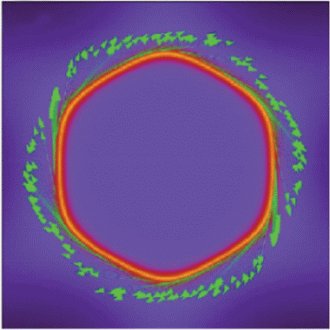
The spin-resolved Fermi surface of surface states of a topological insulator away from the Dirac point. Figure taken from Wei Zhang et al. 2010 New J. Phys. 12 065013.
By Hamish Johnston
If someone asked me, “what is the most fascinating topic in physics today?”, I would have to say: “topological insulators”.
I can appreciate why some people get excited by the prospect of knowing the mass of the Higgs boson, or understanding the true nature of dark matter – but to me such mysteries pale in comparison with the wonders to be found in a chunk of solid matter.
I think I find condensed-matter physics so fascinating because it manages to describe the messy interactions of billions upon billions of electrons, atoms and photons using elegant concepts such as quasiparticles.
And perhaps the most interesting of all quasiparticles could be lurking in topological insulators – a particle reminiscent of “Majorana fermions”, which were predicted in 1937 by the Italian theorist Ettore Majorana but which have yet to be seen.
Majorana fermions are electron-like particles that are their own anti-particles. Unlike more familiar fermions like electrons, they obey “non-Abelian statistics” – which should make them resistant to environmental noise, which is the bane of anyone trying to build a practical quantum computer.
If you want to know more about topological insulators then you are in luck because the New Journal of Physics has just published a focus issue on that very topic.



